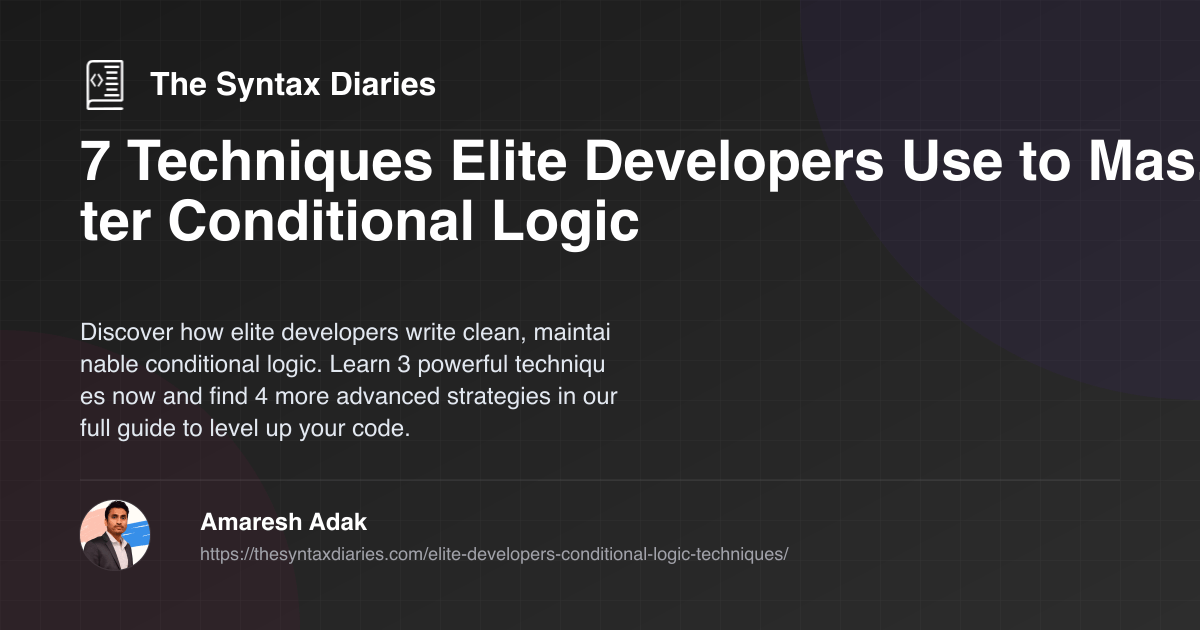
"Clean code isn't just about what works—it's about what lasts."
We've all faced the dreaded spaghetti code problem. Your application grows, features pile up, and suddenly your once-elegant solution becomes a tangled mess of if-statements, switches, and ternary operators. Complex conditional logic is often the breaking point that transforms maintainable code into a debugging nightmare.
Conditional logic is one of the most abused, ignored, and misunderstood parts of most codebases. Here's a glimpse at what top engineers do differently:
Common Pitfalls in Conditional Logic
Most developers struggle with:
- Deep Nesting Hell: Multiple levels of indentation that make code impossible to understand
- Overusing Else Statements: Creating ever-expanding branches that become maintenance nightmares
- Switch Statement Abuse: Letting switch statements grow unchecked with complex logic in each case
A Better Approach
Top engineers apply these techniques:
1. Use Early Returns to Flatten Logic
// Instead of deeply nested conditionals:
function getDiscount(user) {
if (!user.isActive) return 0
if (user.isPremium) return 20
return 10
}
2. Use Lookup Objects Instead of Switch
const PLAN_PRICES = {
basic: 9.99,
standard: 19.99,
premium: 29.99,
}
function getPlanPrice(planType) {
return PLAN_PRICES[planType] || 0
}
3. Name Your Conditions
const canEditContent =
user.role === 'admin' || (user.role === 'editor' && content.author === user.id)
if (canEditContent) {
// Allow edit
}
Learn how one team reduced their code from 40+ lines to just 8 and dropped bug count by 70% with these techniques!
Ready to Implement This in Production?
Skip the months of development and debugging. Our team will implement this solution with enterprise-grade quality, security, and performance.